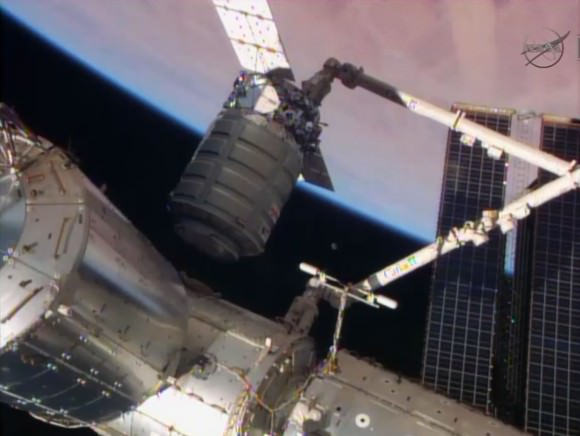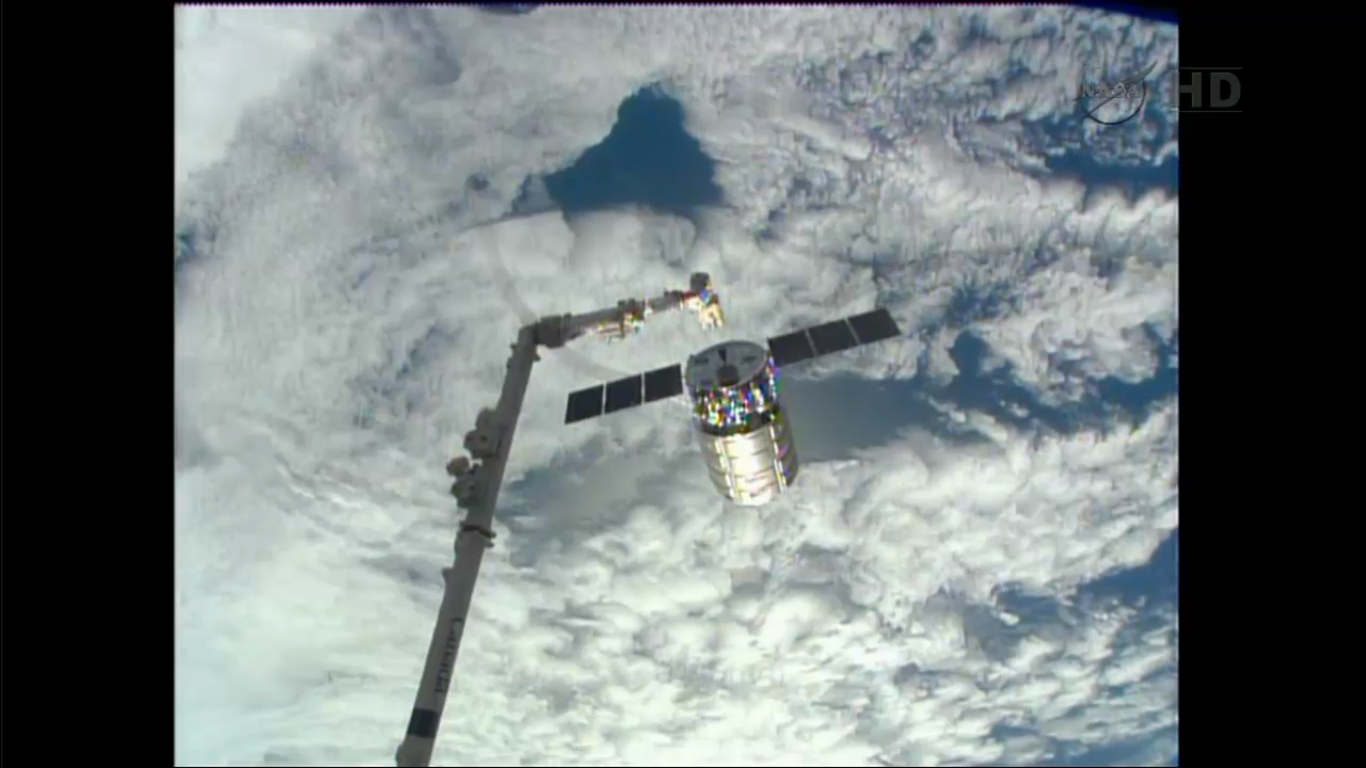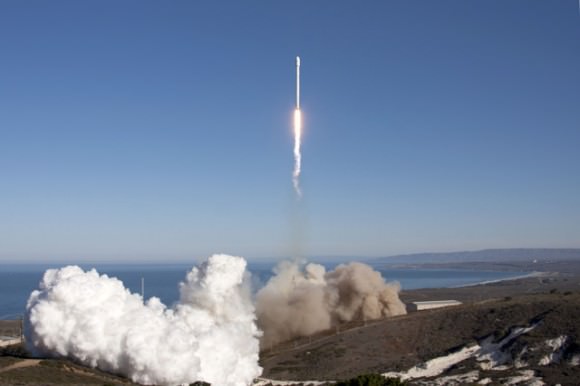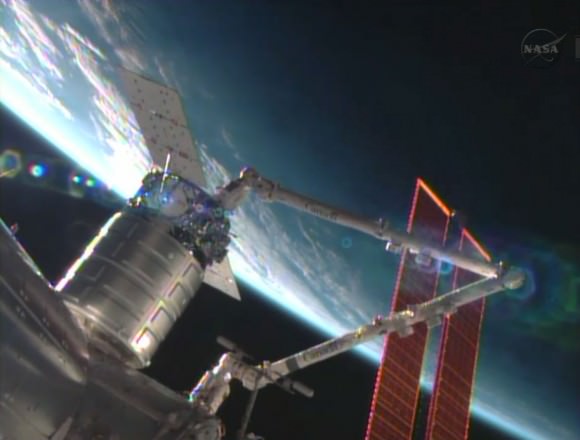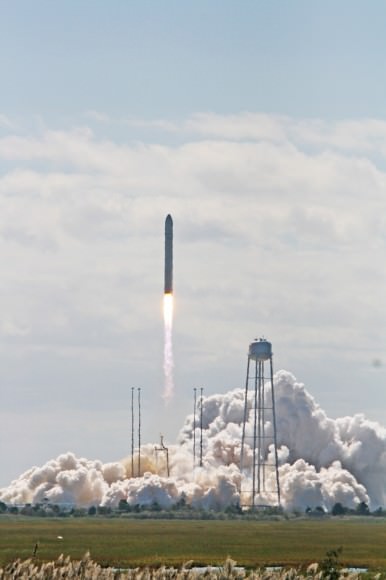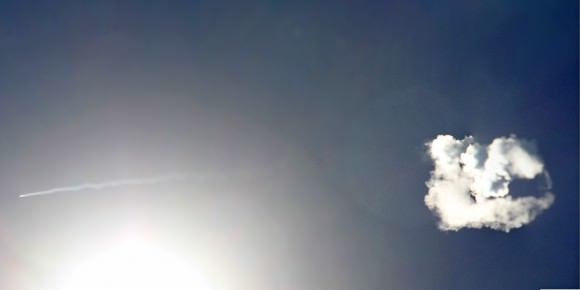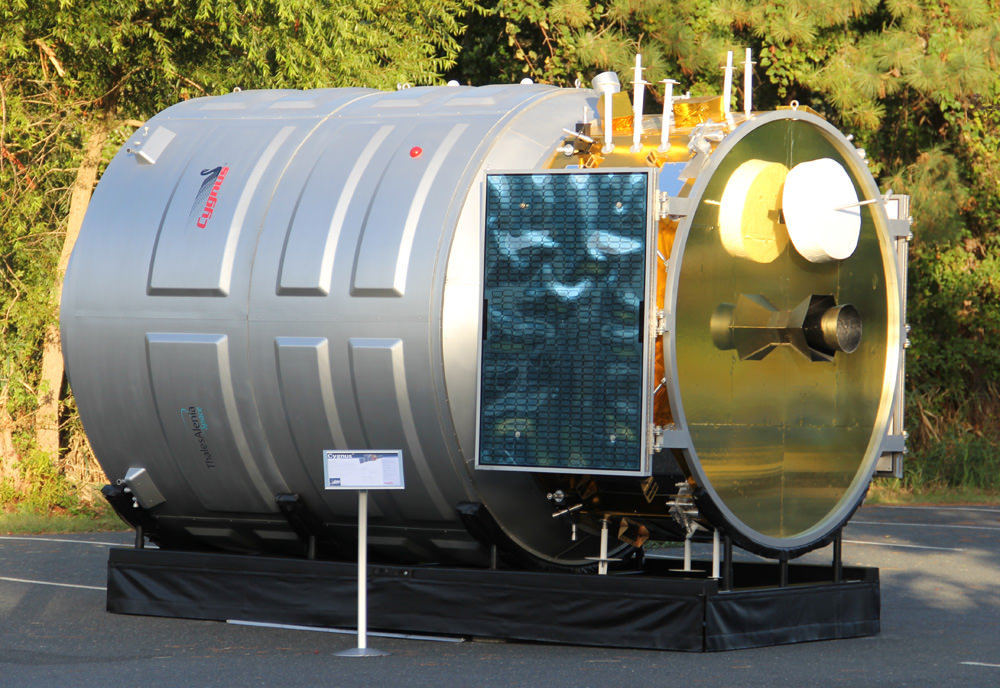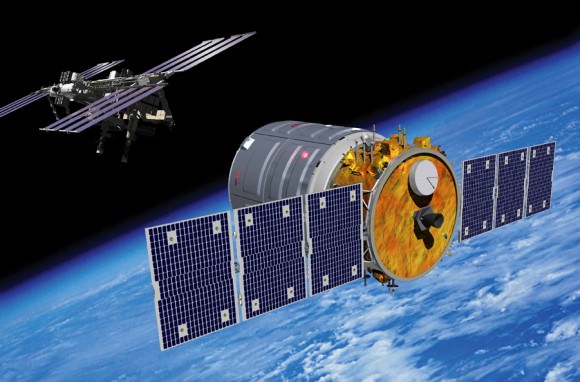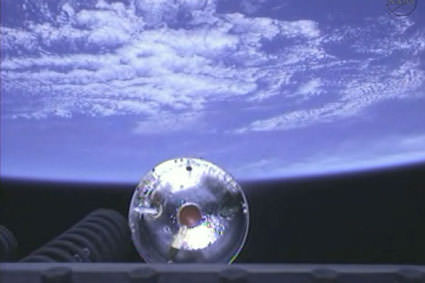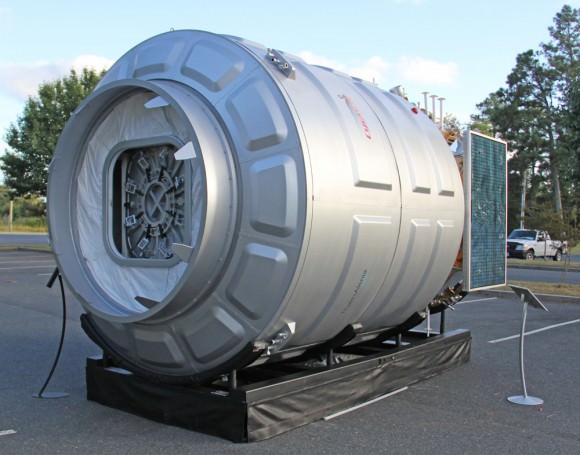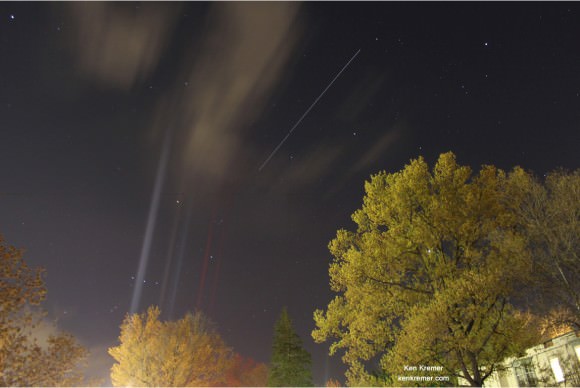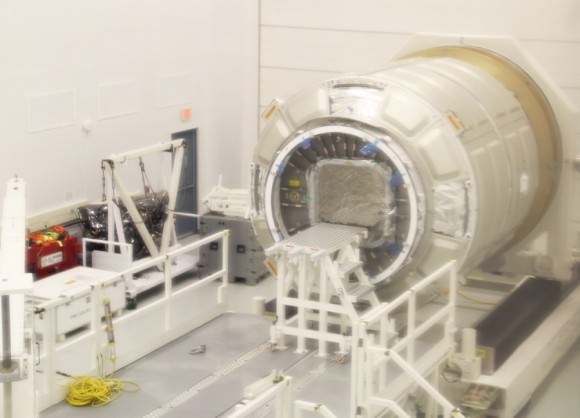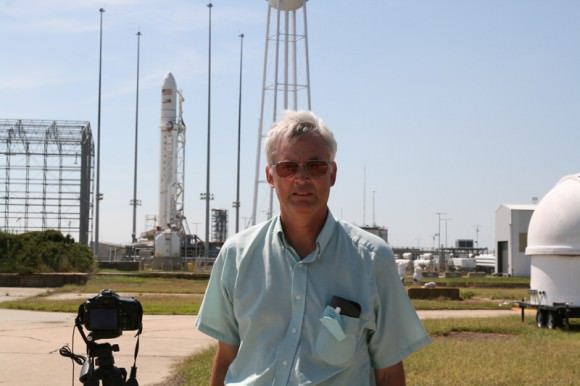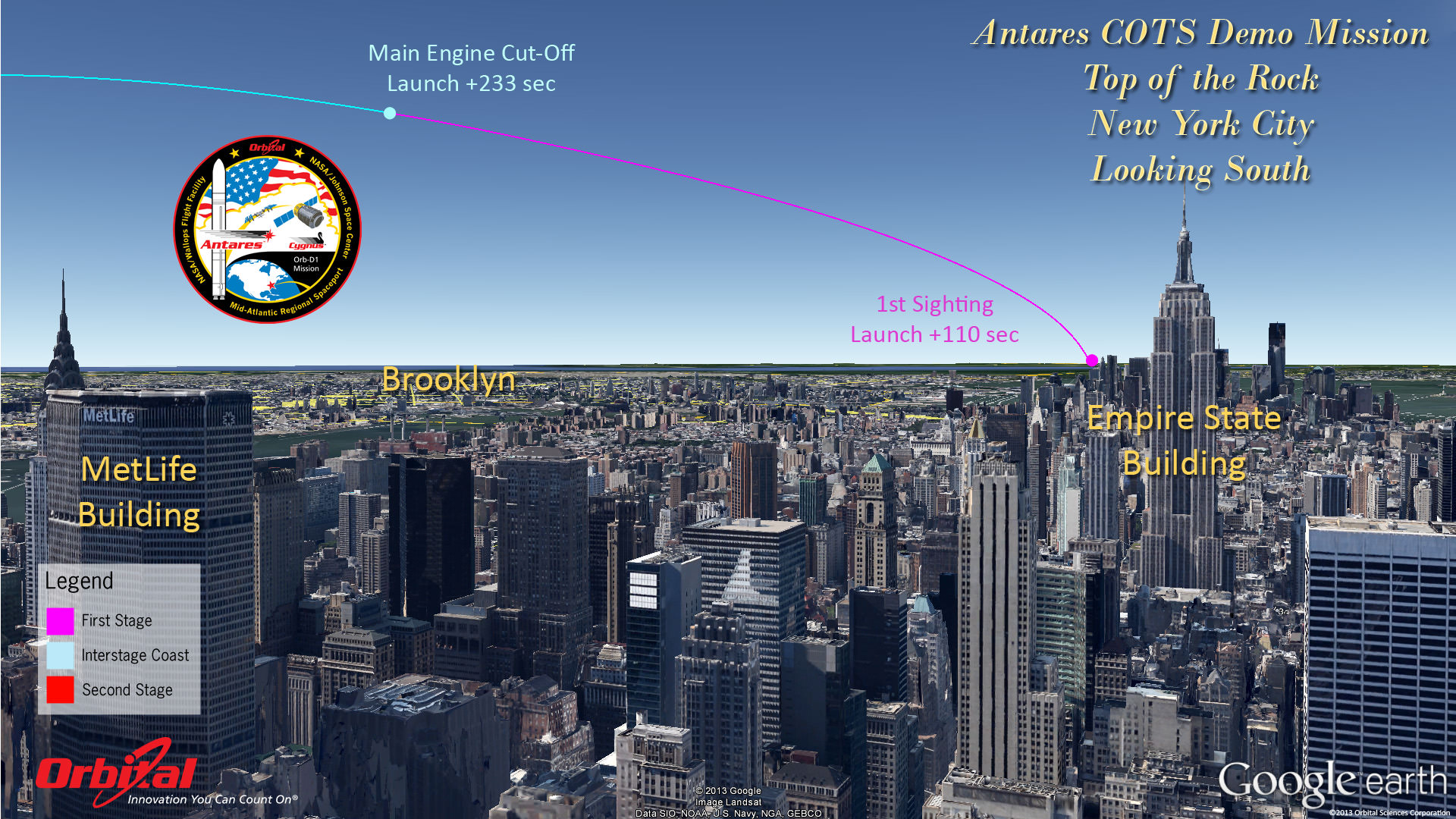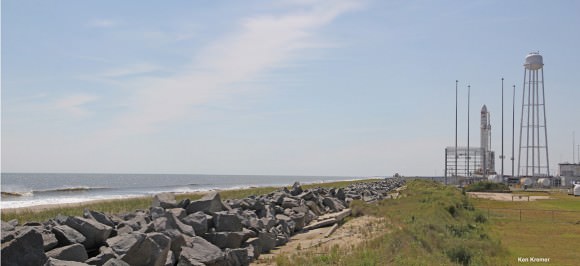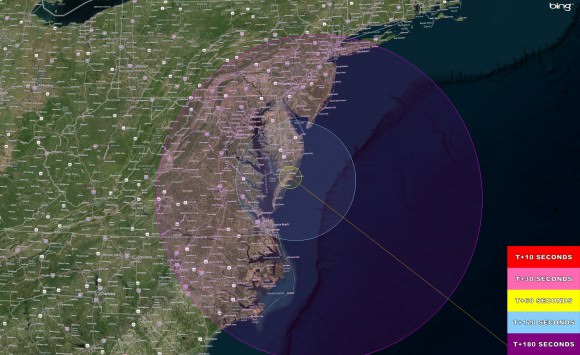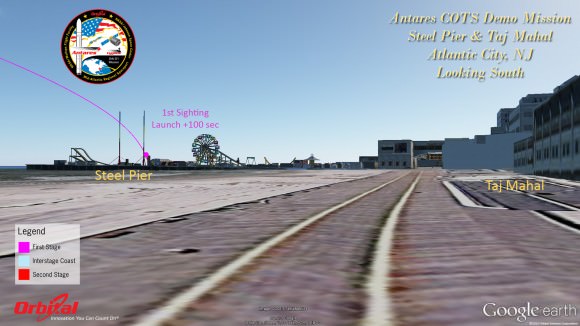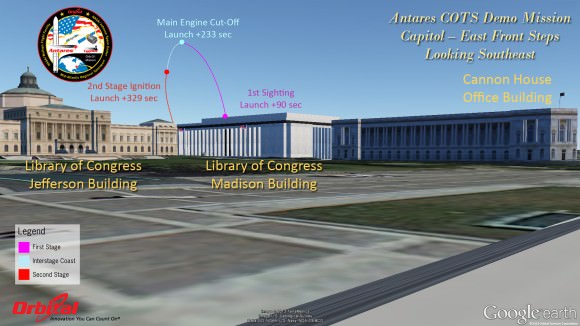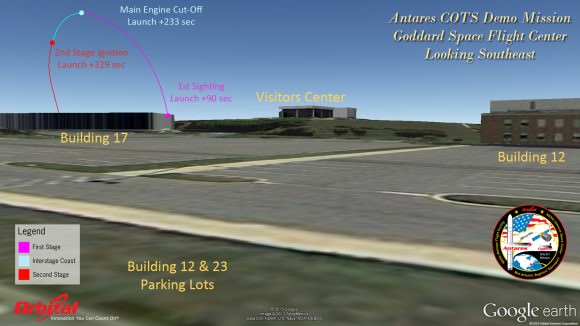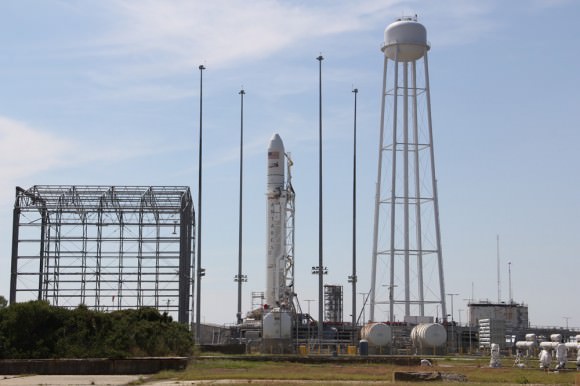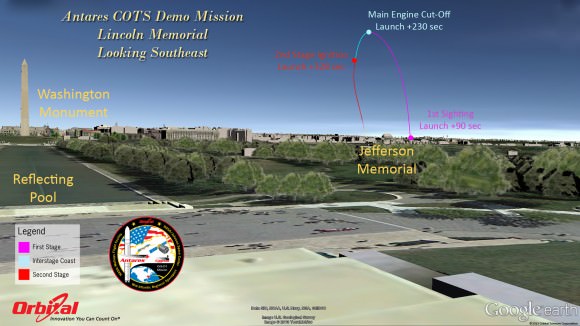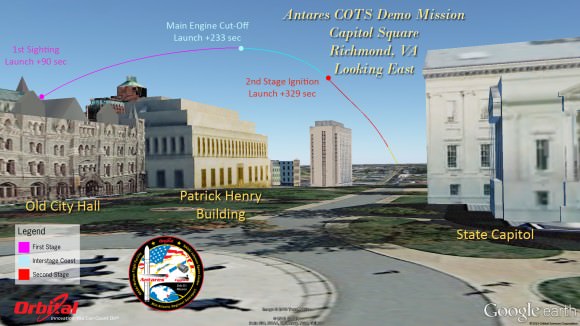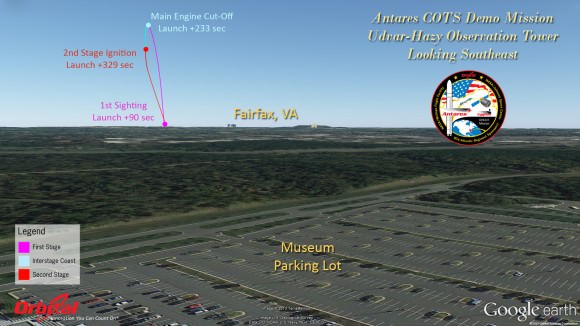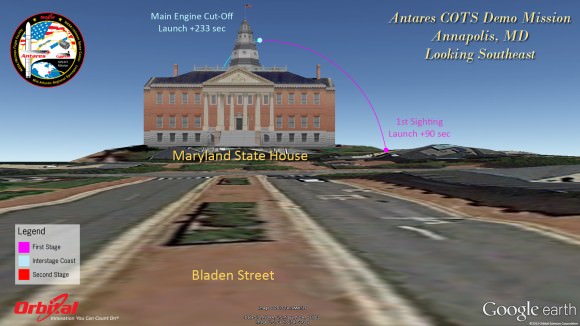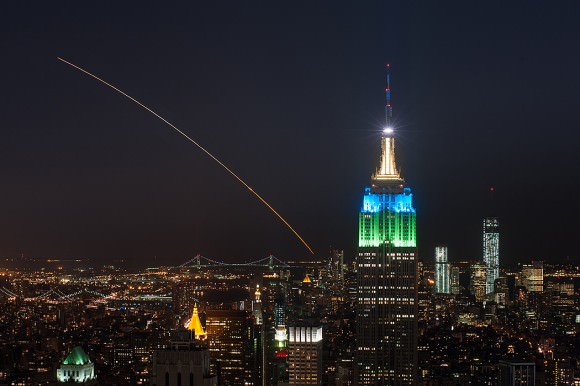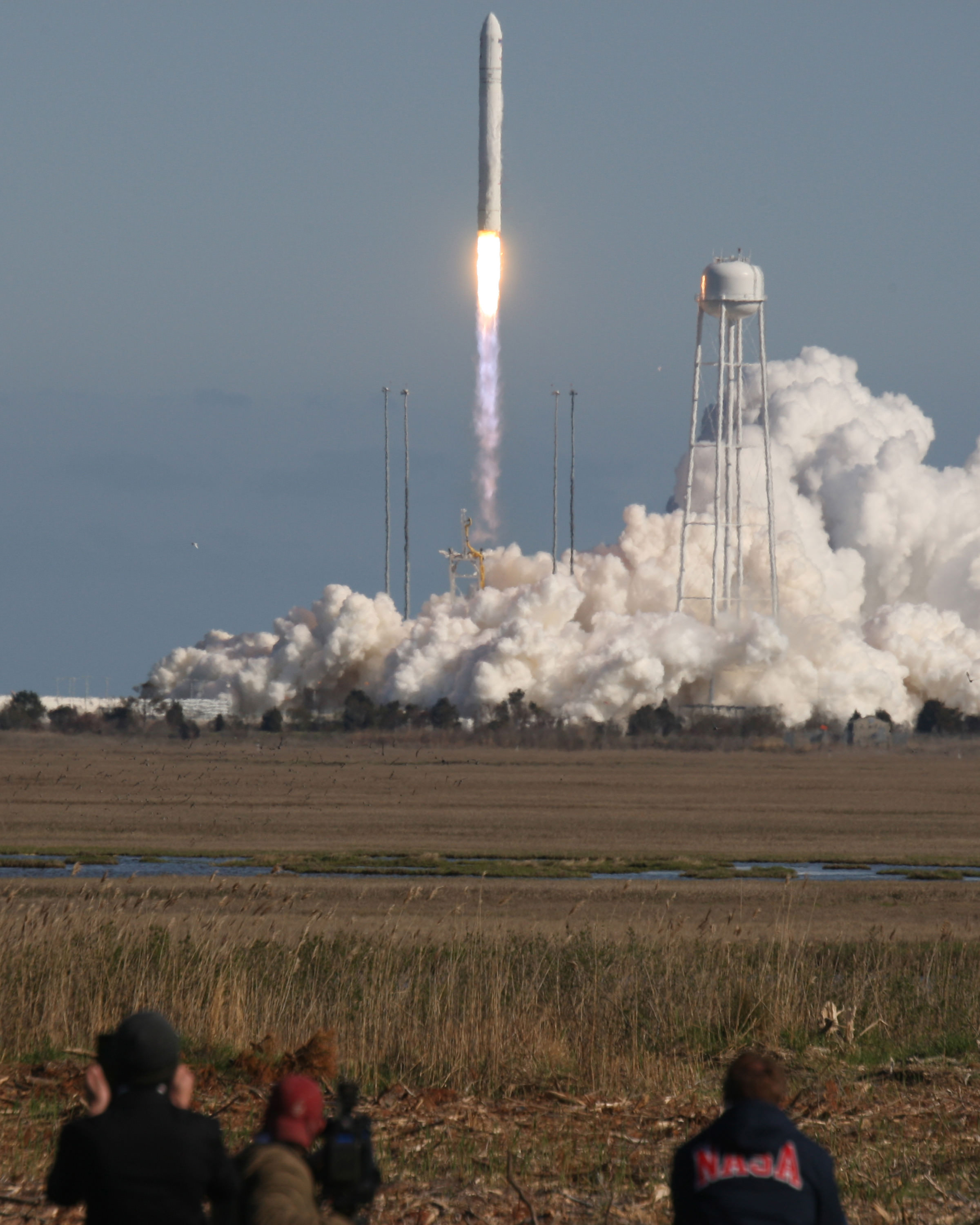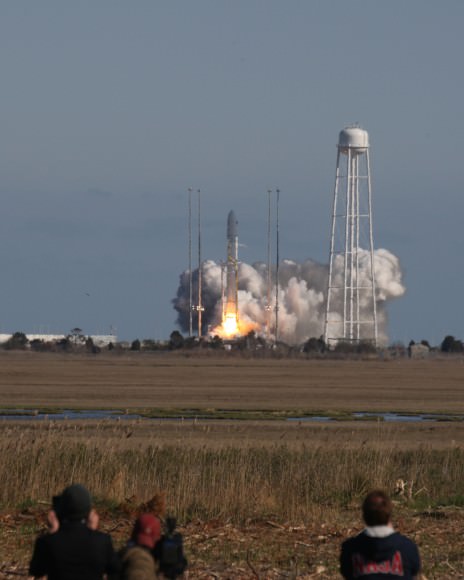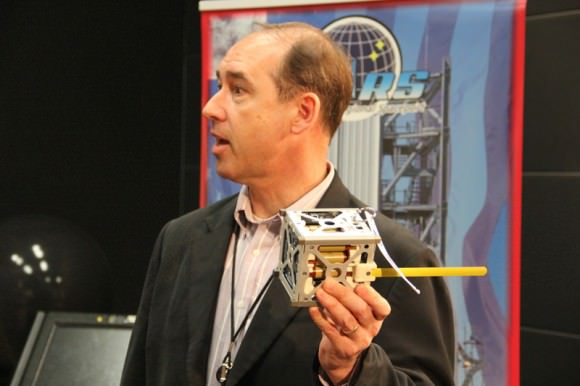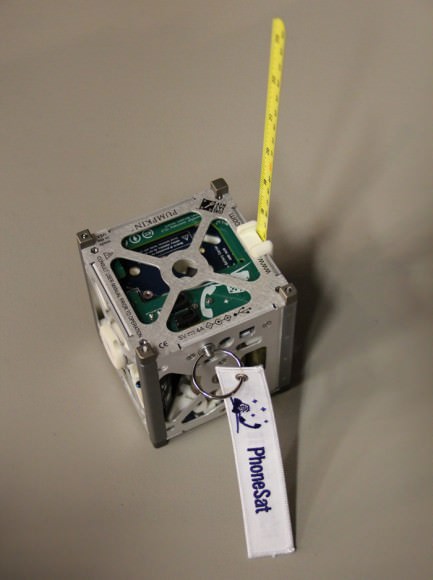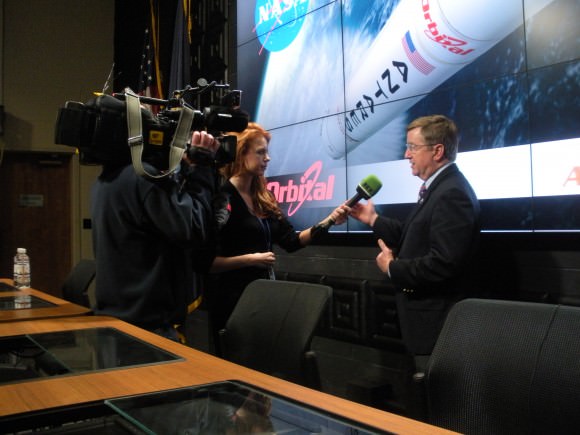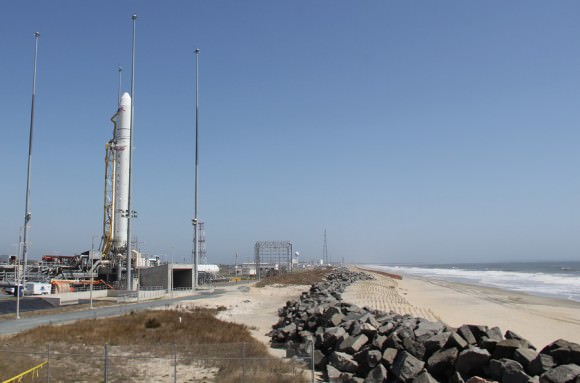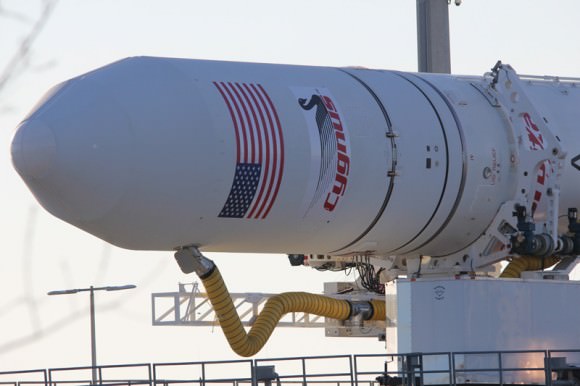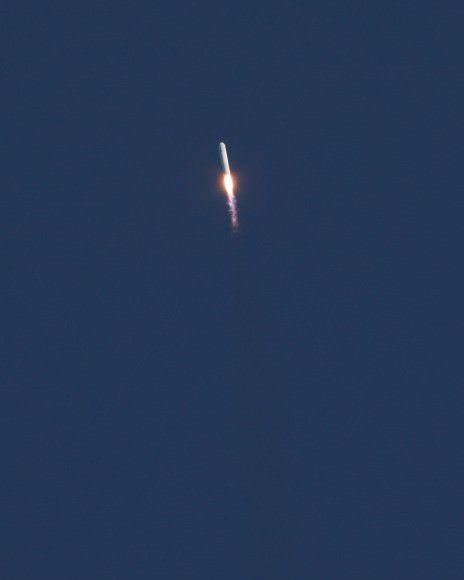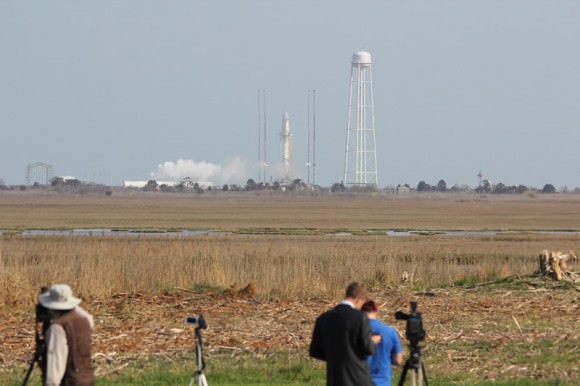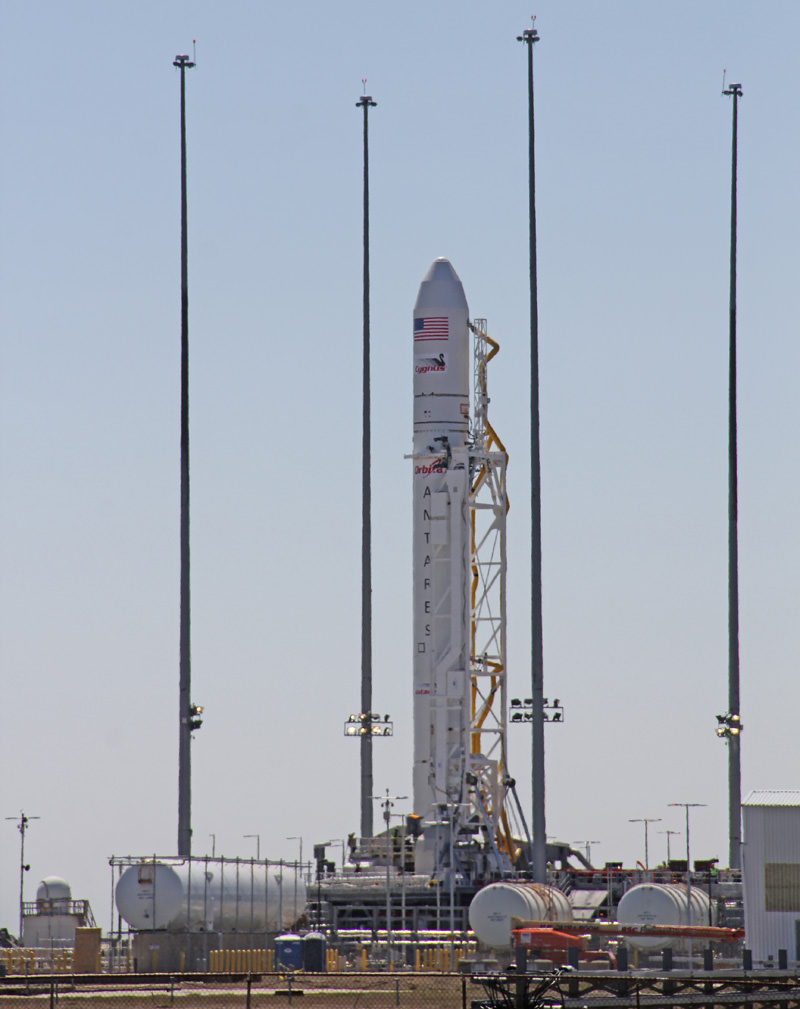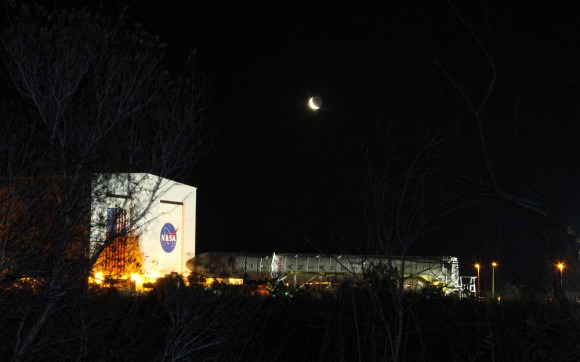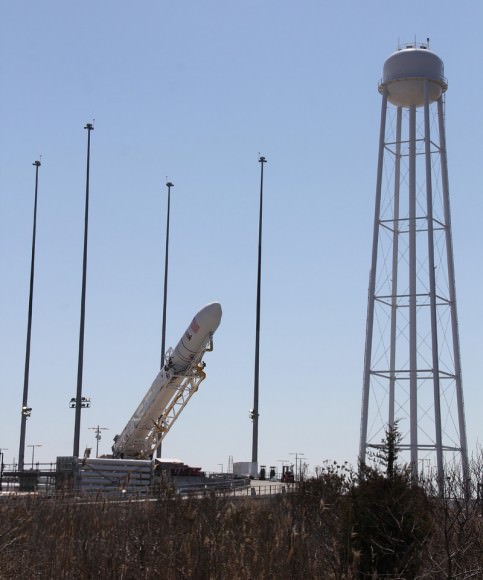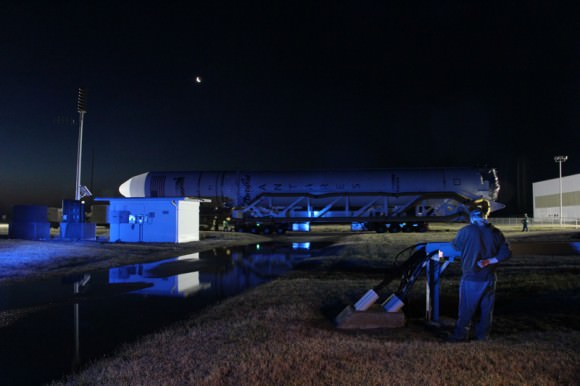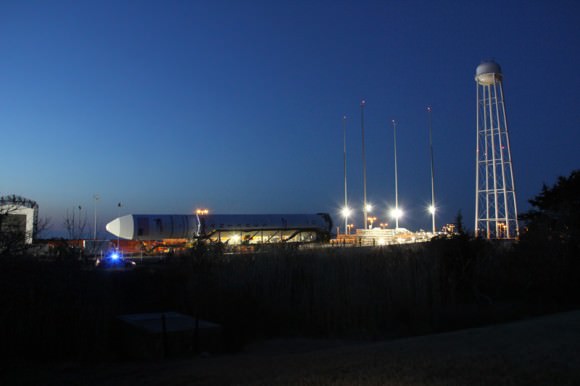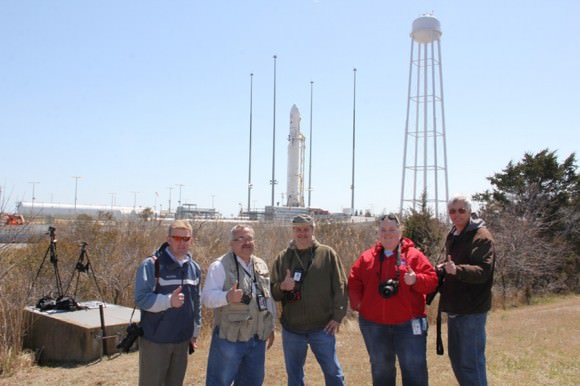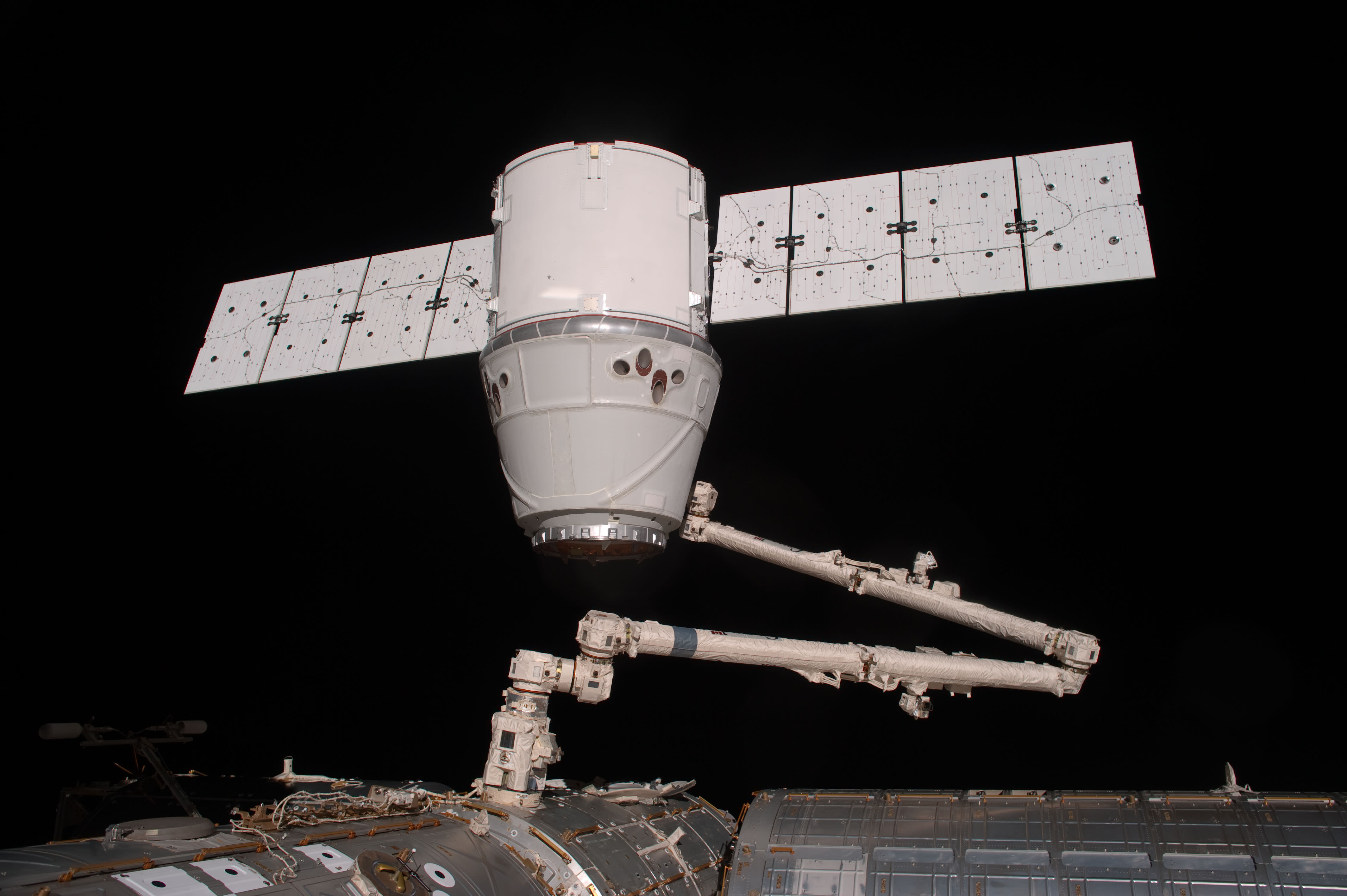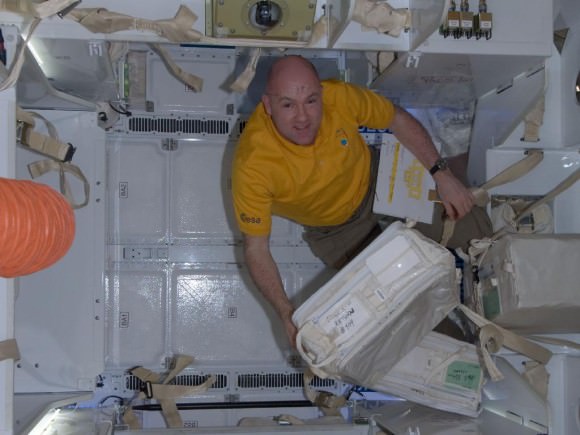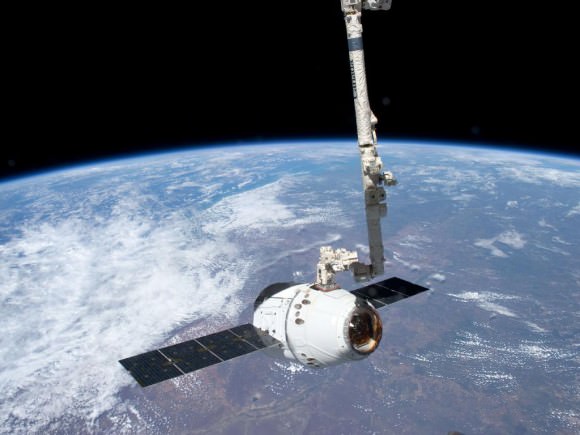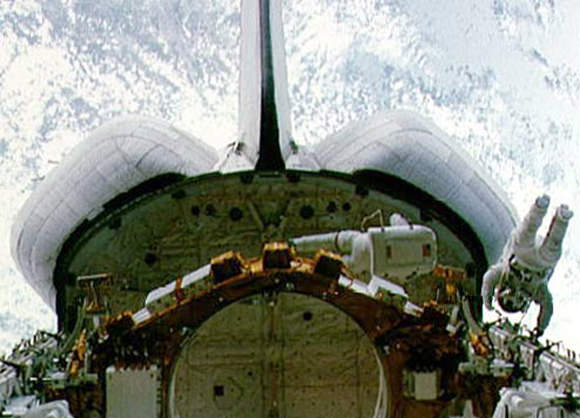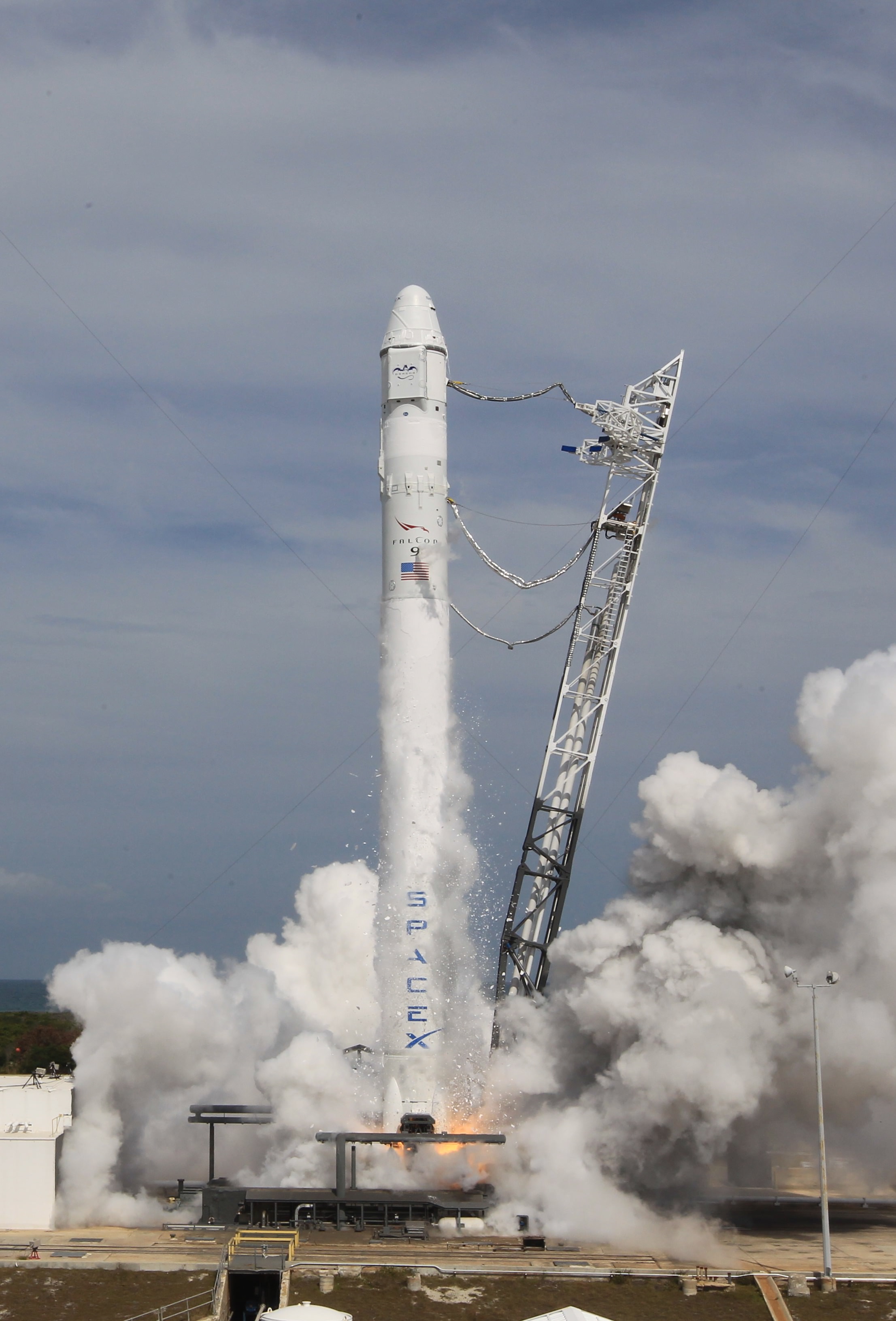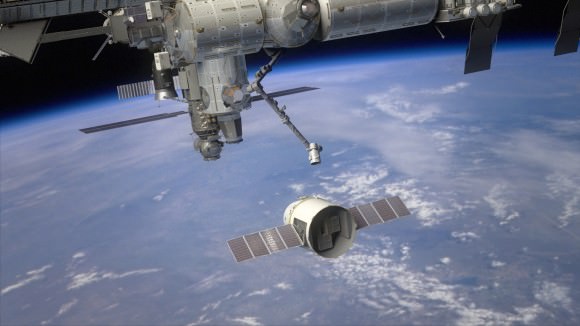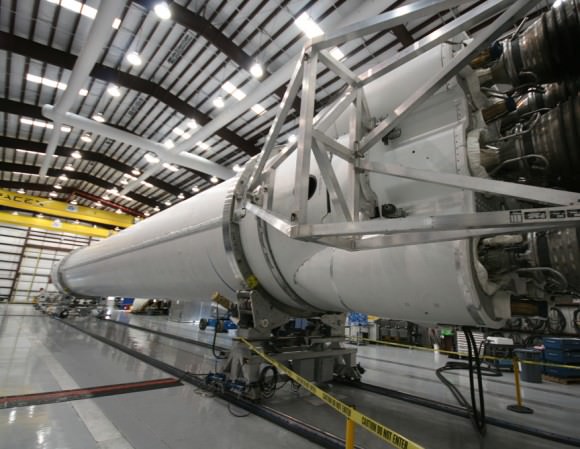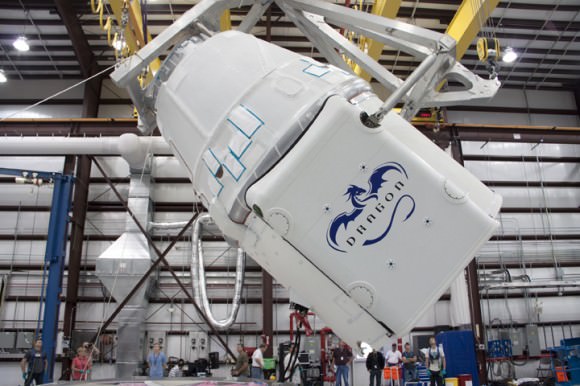Following a picture perfect blastoff from NASA’s frigid Virginia spaceport and a flawless docking at the International Space Station (ISS) in mid-January, the privately built Cygnus cargo resupply vehicle has completed its five week long and initial operational station delivery mission and departed the facility early this morning, Tuesday, Feb. 18.
The Expedition 38 crewmembers Michael Hopkins of NASA and Koichi Wakata of the Japan Aerospace Exploration Agency (JAXA) demated the Orbital Sciences Cygnus commercial spacecraft from the Earth-facing port of the Harmony node using the Canadian built robotic arm at about 5:15 a.m. EST.
The cylindrically shaped ship was released from the grappling snare on the terminus of the 57 foot long extended arm at about 6:41 a.m. EST and with a slight shove as both vehicles were flying at 17500 mph and some 260 miles (415 km) altitude above Earth over the southern tip of Argentina and the South Atlantic Ocean.
The astronauts were working at a robotics work station in the windowed Cupola module facing the Earth. The arm was quickly pulled back about 5 feet (1.5 m) after triggering the release from the grappling pin.
NASA TV carried the operation live. Station and arm cameras provided spectacular video views of the distinctive grey cylindrical Cygnus back dropped by the massive, cloud covered blue Earth as it was released and sped away.
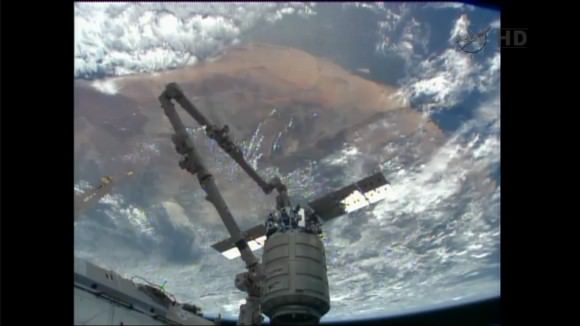
Cygnus was commanded to fire its jets for the departure maneuvers to quickly retreat away from the station. It was barely a speck only 5 minutes after the arm release maneuver by Wakata and Hopkins.
“The departure was nominal,” said Houston mission control. “Cygnus is on its way.”
The solar powered Cygnus is America’s newest commercial space freighter and was built by Orbital Sciences Corporation with seed money from NASA in a public-private partnership aimed at restoring the cargo up mass capabilities lost following the retirement of NASA’s space shuttles in 2011.
Cygnus, as well as the SpaceX Dragon cargo vessel, functions as an absolutely indispensable “lifeline” to keep the massive orbiting outpost alive and humming with the science for which it was designed.
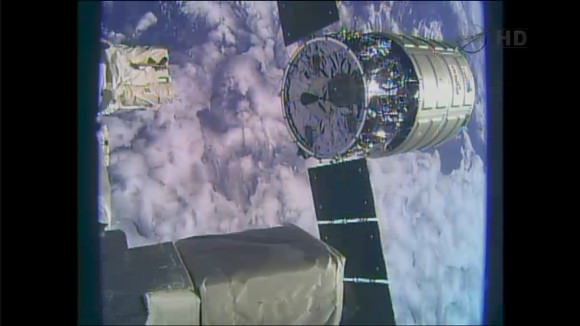
The freighter delivered a treasure trove of 1.5 tons of vital research experiments, crew provisions, two dozen student science projects, belated Christmas presents, fresh fruit and more to the million pound orbiting lab complex and its six man crew.
The milestone flight dubbed Orbital 1, or Orb-1, began with the flawless Jan. 9 blast off of Cygnus mounted atop Orbital Sciences’ two stage, private Antares booster on the maiden operational launch from NASA’s Wallops Flight Facility along Virginia’s eastern shore. See a gallery of launch photos and videos – here and here.
“Today’s launch gives us the cargo capability to keep the station going,” said Frank Culbertson, executive vice president and general manager of Orbital’s advanced spaceflight programs group, and former Space Shuttle astronaut.
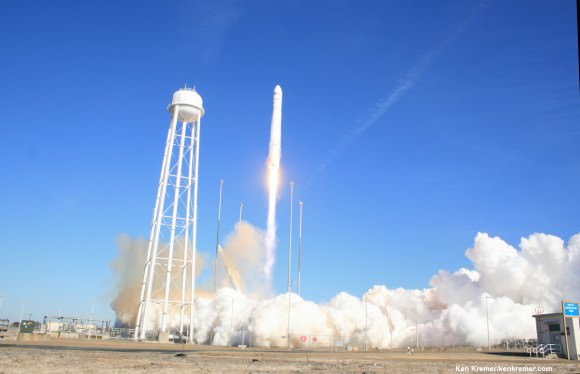
And NASA’s commercial cargo initiative is even more important following the recent extension of station operations to at least 2024.
“I think it’s fantastic that the Administration has committed to extending the station,” Culbertson told me following the launch at NASA Wallops.
“So extending it gives not only commercial companies but also researchers the idea that Yes I can do long term research on the station because it will be there for another 10 years. And I can get some significant data.”
Following a two day orbital chase the Cygnus spacecraft reached the station on Jan. 12.
The ship is named in honor of NASA shuttle astronaut C. Gordon Fullerton who passed away in 2013.
Science experiments weighing 1000 pounds accounted for nearly 1/3 of the cargo load.
Among those were 23 student designed experiments representing over 8700 K-12 students involving life sciences topics ranging from amoeba reproduction to calcium in the bones to salamanders.
The students are participants of the Student SpaceFlight Experiments Program (SSEP) sponsored by the National Center for Earth and Space Science Education (NCESSE).
Over 20 of the students attended the launch at Wallops. The student experiments selected are from 6 middle school and high school teams from Washington, DC, Traverse, MI, Downingtown and Jamestown, PA, North Charleston, SC and Hays County, TX.
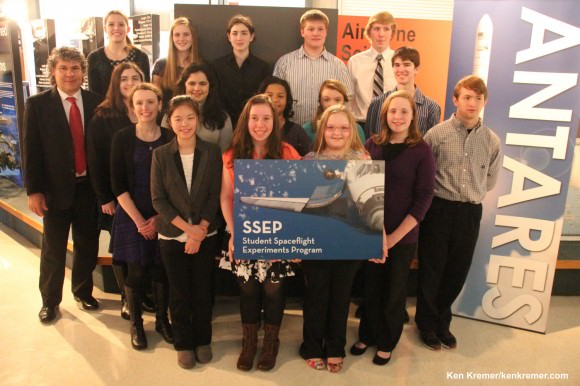
These are among the students benefiting from ISS extension
Science experiments from these students representing six schools across America were selected to fly aboard the Cygnus spacecraft which launched to the ISS from NASA Wallops, VA, on Jan . 9, 2014, as part of the Student Spaceflight Experiments Program (SSEP). Credit: Ken Kremer – kenkremer.com
“More than half the student experiments were activated within four days of arrival,” Dr. Jeff Goldstein, Director of the NCESSE, told Universe Today exclusively.
Ant colonies from three US states were also on board to study “swarm behavior.” The “ants in space” experiment was among the first to be unloaded from Cygnus to insure they are well fed for their expedition on how they fare and adapt in zero gravity.
33 cubesats were also aboard. Several of those were deployed last week from the Japanese Experiment Module airlock.
The Orbital-1 mission was the first of 8 operational cargo logistics flights scheduled under Orbital Sciences’ multi-year $1.9 Billion Commercial Resupply Services contract (CRS) with NASA to deliver 20,000 kg (44,000 pounds) of cargo through 2016.
Cygnus was berthed at the ISS for some 37 days.
After fully unpacking the 2,780 pounds (1,261 kilograms) of supplies packed inside Cygnus, the crew reloaded it with all manner of no longer need trash and have sent it off to a fiery and destructive atmospheric reentry to burn up high over the Pacific Ocean on Feb. 19.
“The cargo ship is now a trash ship,” said NASA astronaut Cady Coleman.
“Getting rid of the trash frees up a lot of valuable and much needed space on the station.”
When it reaches a sufficiently safe separation distance from the ISS, mission controllers will fire its engines two times to slow the Cygnus and begin the final deorbit sequence starting at about 8:12 a.m. on Wednesday.

Cygnus pressurized cargo module – side view – during exclusive visit by Ken Kremer/Universe Today to observe prelaunch processing by Orbital Sciences at NASA Wallops, VA. ISS astronauts will open this hatch to unload 2780 pounds of cargo. Docking mechanism hooks and latches to ISS at left. Credit: Ken Kremer – kenkremer.com
Cygnus departure is required to make way for the next private American cargo freighter – the SpaceX Dragon, which is now slated to blast off from Cape Canaveral, Florida on March 16 atop the company’s upgraded Falcon 9 booster.
Two additional Antares/Cygnus flights are slated for this year.
They are scheduled to lift off around May 1 and early October, said Culbertson.
Indeed there will be a flurry of visiting vehicles to the ISS throughout this year and beyond – creating a space traffic jam of sorts.
Stay tuned here for Ken’s continuing Orbital Sciences, SpaceX, commercial space, Orion, Chang’e-3, LADEE, Mars rover, MAVEN, MOM and more planetary and human spaceflight news.
